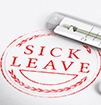Abstract
How much would it cost employers to offer paid sick leave to their employees and how does this compare to typical industry expenses? The answer to this question is important because more cities and states are considering legally requiring employers to provide paid sick leave. Such mandates would help provide paid sick leave to the 32% of private industry workers who currently lack access. However, if the costs imposed on employers are too burdensome and they significantly raise prices or reduce staffing to adjust, workers and consumers may suffer. We find for the subsectors examined, the cost to extend paid sick leave coverage to all workers is relatively minimal. For the restaurant and fast food industries, the sick leave cost would increase prime cost as a share of sales—an industry measure viewed as sustainable between 60 and 65%, by only 0.3 percentage points. The cost increase would amount to only 15% of average annual changes in total expenses, meaning it is well within the range of cost fluctuations businesses regularly adapt to. In general, we find the cost increase is relatively small when compared to overall expenses; it is no more than 0.5% of total operating expenses. Even if the entire cost increase is passed onto consumers in the form of increased prices, overall prices in the fast food industry would rise at most by 0.3%, meaning the price of $3.99 Big Mac goes up by one cent. Funds to cover the complete cost increase of paid sick leave could also come from shifting the allocation of resources among stakeholders within a firm. Publicly traded companies in the food and drinking industry, for example, could reduce the amount of share buybacks by 15% to completely cover the cost increase. Furthermore, a reasonable estimate of the benefits of reduced turnover indicates those costs savings alone could cover almost all of the paid sick leave cost increase.



